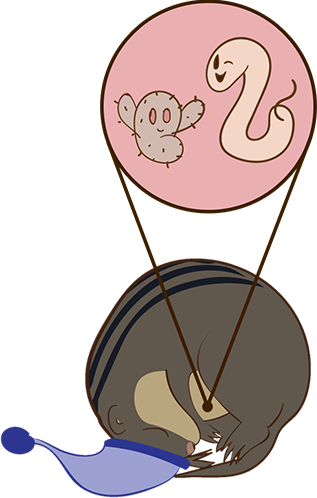Hibernation Microbiome
Microbiology fascinates me due to the disproportionate ability of microscopic organisms to influence larger entities, ranging from animals to whole ecosystems.
I study the complex relationship between communities of microbes (microbiome) and their host, which is vital for increasing metabolic efficiency and optimizing energy usage to benefit both partners.
This relationship is especially dynamic in animals that experience extreme, natural shifts in diet and physiology:
hibernating mammals!
I study hibernating 13-lined ground squirrels to understand how the squirrel and its gut microbes work together to survive winter
Why?
To use hibernation to improve medicine and space travel!
Hibernation has great potential to improve biomedical treatments like induced comas.
It may also hold the secret to advancing space travel by allowing astronauts to enter a hibernation-like state.


